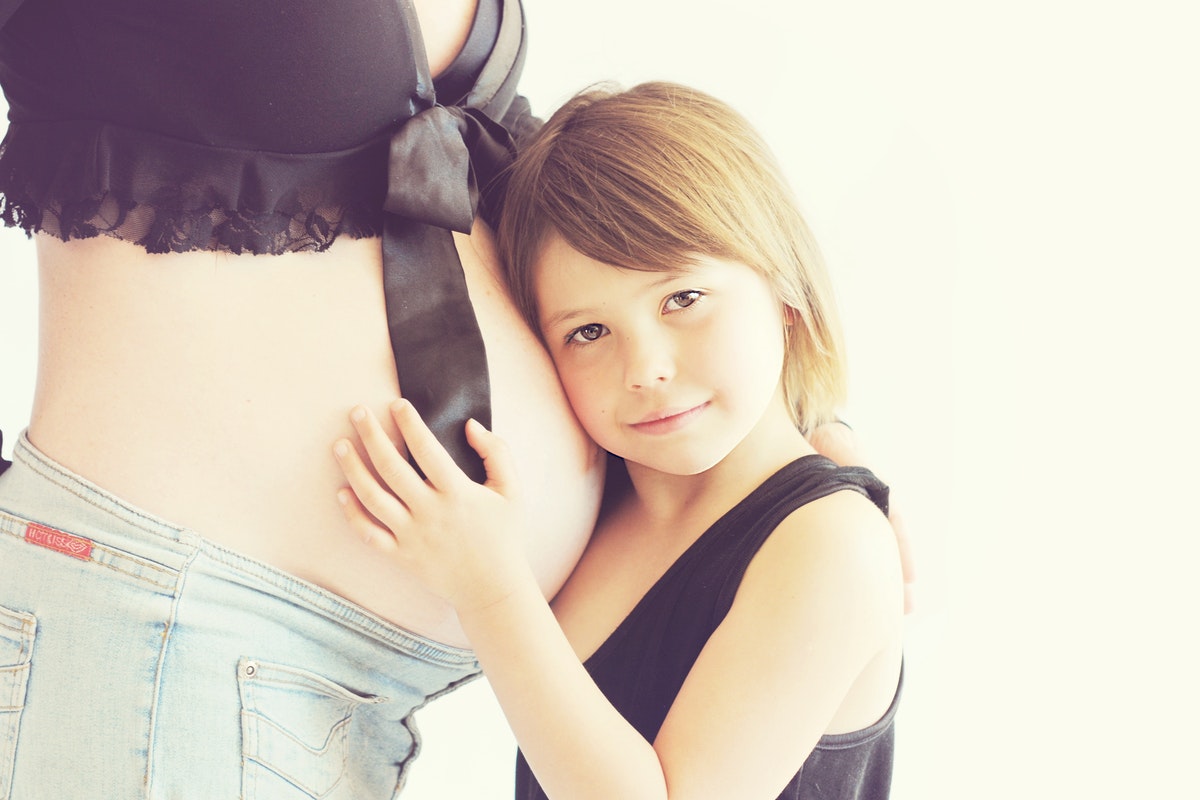Pregnancy can be a very exciting time, with lots of chances for yourself and (of course!) your baby. Every week something new is happening. If you’ve been curious about what is happening during your pregnancy and how your baby is growing, here are pregnancy guide to your pregnancy week by week to help you keep track.
Weeks 1 & 2: It sounds strange, but the first two weeks of your pregnancy are before you get pregnant! Doctors can never be certain of exactly when you conceived, so they count the weeks of a pregnancy from your last period, an average of 2 weeks before conception.
Also Read: Bariatric Surgery – Lose Weight Quickly
During these two weeks, your body is getting ready for a baby. Ova, the medical name for a woman’s eggs, are maturing and getting ready to be fertilized. If you are trying to get pregnant, make sure you are eating healthy and getting plenty of folic acid.
Pregnancy week by week pregnancy test Week 3: You still haven’t missed your period, but you may already be pregnant. If your egg was fertilized by your partner’s sperm than it has started growing – right now it is a ball of cells about the same size as the head of a pin. You won’t notice any changes in yourself yet, but some home pregnancy tests are about to detect a pregnancy this early.
Week 4: The embryo is being fed from the uterine lining, and the placenta is beginning to develop. The embryo has divided into three layers of cells. The outer layer will become skin and hair, and has the beginnings of eyes. The inner layer is the start of the digestive system and lungs. The middle layer will become everything else. If you weren’t expecting to get pregnant, than missing your period this week may be your first sign.
Week 5: The embryo is developing its brain, as well as its heart and bones. You may start to feel morning sickness or be more tired than usual. Now is the time to schedule your first prenatal check up, if you haven’t already.
Week 6: It is sometimes possible to hear baby’s heartbeat on a fetal monitor at this stage. From here to 10 weeks is a critical time for baby’s development, make sure to stay away from drugs, alcohol and other influences that could cause development problems. Folic acid can help brain development, so if you aren’t taking it already, now is the time to start.
Week 7: Baby is about a half inch long now, and growing fast. He or she is growing nostrils and intestines, and has arm and leg buds. You may have started putting on weight now. If you have morning sickness you may have lost weight instead. Don’t worry if this happens, you have time to gain it back. Just eat as healthy as you can.
Week 8: Eyelids and ears start to grow this week, and baby’s arms start to bend at the elbow. Your uterus is expanding, more than twice as large as it was. You may have some cramping during your pregnancy, but talk to your doctor if you have spotting or bleeding.
Week 9: Baby is an inch long, and has started moving. You won’t feel the movement yet, but you may see it in an ultra sound. Fingers are growing and so is a neck. Your waist line will be expanding as your uterus grows, but people won’t be able to tell you are pregnant yet. You may experience PMS-like mood swings. Try to eat lots of broccoli and dairy – calcium is good for baby’s bones.
Week 10: Baby is now officially a ‘fetus’. If baby is healthy now, he will likely stay that way – most physical malformations develop before 10 weeks. Testing for genetic disorders should be scheduled within the next 2 weeks pregnancy week by week pregnancy comparison
Week 11: Baby may be up to 2 inches long. She is swallowing and kicking, and you can hear her heartbeat on a Doppler monitor when you visit your ob-gyn.
Week 12: The worst danger of miscarriage is past now, as baby is fully formed, with all major body parts. The rest of your pregnancy baby’s job is to grow bigger and stronger. Genital organs have developed, but an ultrasound probably won’t see them yet. Morning sickness will usually fade around this time, and you will start getting your energy back.
Also Read: 8 Best Ways To Avoid Swelling in Your Body
Week 13: Baby can be as long as 3 inches, and as big as a peach. His fingers and toes have separated and his eyes are moving closer together. Your uterus will have filled your pelvis, and is now starting to grow up into your abdomen.
Week 14: Baby has finger prints! She’s grown another inch, and is starting to respond to things that happen around her – she’ll even squirm away if your uterus is poked. In the mean time, you may be developing some constipation from pregnancy hormones. Light exercise and lots of fruit can help.
Week 15: Hair is growing in – in fact hair is growing all over. Baby is covered in a fine down called lanugo, which will fall out a few weeks before birth. Some babies start sucking their thumbs around this time. During the next few weeks you’ll be scheduled for blood tests to detect markers for Down’s syndrome. If the blood tests are concerning, or you are over 35, you’ll also be scheduled for amniocentesis, a test that samples the amniotic fluid.
Week 16: You may start to feel your baby move about now. He keeps growing, over 4 inches long and weighing over 2 ounces.
Week 17: Baby is breathing amniotic fluid, which helps her lungs develop. She is also growing a layer of fat which will keep her warm and help her metabolism. You may start developing more of an appetite about now, and you have started to show. You may get dizzy if you change positions quickly, so move slowly when standing up or laying down.
Week 18: Baby is developing taste buds, reflexes and light sensitivity. He may yawn, stretch or move his arms to shield his eyes from bright light. He weighs over 5 ounces now. Between now and 22 weeks you will probably have an ultrasound to verify due date and may be able to find out baby’s sex.
Week 19: Baby keeps growing, and you may be developing mid-pregnancy aches and pains. Your heart is working much harder to support both you and baby, so try and take it easy.
Week 20: Baby can hear sounds now – in time she’ll learn to recognize your voice and the voices of other people you speak with often. You are at the midpoint of the pregnancy. If you are experiencing back pain, watch your posture, and use pillows to support your body when lying down.
Week 21: By now, baby is around 7 inches long and weighs around 10 ½ ounces. He isn’t growing as fast any more, but more energy is going into the internal organs. Buds for adult teeth are also beginning to grow.
Week 22: Baby is moving almost all the time now, and may respond if you talk or sing to her. You’re probably feeling pretty good, but may have some cramping in your legs and feet. Bananas and other calcium-rich foods can reduce cramps.
Week 23: Baby is almost 1 pound, but still has a lot of weight to gain. He looks like a tiny newborn now, and just needs to keep growing. The skin of your stomach may become itchy as it keeps stretching. If born prematurely, baby may be able to survive with intensive care.
Week 24: Baby has started to develop white blood cells, for fighting infection. You may feel jerking when she gets the hiccups. Between now and 28 weeks you’ll be tested for gestational diabetes.
Week 25: Baby is almost 9 inches long, and weighs about 1 ½ pounds. Dad may be able to hear a heartbeat if he puts an ear to your abdomen. You should be gaining a pound of weight a week.
Week 26: Baby has patterns of sleeping and waking, and the same brain wave patterns as a newborn. His ears are fully developed and he may move in time with music. You may feel some rib pain as your uterus grows up into your rib cage.
Week 27: Baby can cry. She will often suck her thumb, which helps develop the muscles she’ll need for nursing after birth. You may be having trouble with balance and mobility as your abdomen grows and center of weight changes.
Week 28: Baby measures over 10 inches long and over 2 pounds. He may dream. Baby has a good chance of survival if born prematurely. You may start to have swelling in your feet or Braxton Hicks contractions (fake labour). Now is a good time to look into birthing classes and making a birth plan, if you haven’t already.
Week 29: Baby can tell the difference between sunlight and artificial light. She isn’t moving around as much, because your uterus is getting cramped, but she is still kicking and stretching regularly. You should be alert for possible signs of pre-eclampsia – if you have severe headaches or blurred vision call your doctor immediately.
Week 30: Baby is about 17 inches and 3 pounds. Baby is beginning to control his own temperature and his hands are fully formed. Some Moms-to-be start feeling discomfort in their pelvis around this time. Pregnancy week by week
Week 31: Baby keeps growing – over 18 inches and counting. Rarely, a woman’s water will break weeks before labor. If this happens to you call your doctor immediately. The water breaking early creates a risk of infection.
Week 32: Baby is almost 4 pounds and can open her eyes. You’ll probably start seeing your doctor more frequently as your due date approaches. You may get colostrum – a pre-milk – leaking from your breasts.
Week 33: Baby is almost 20 inches, and just about out of room to move, so you won’t feel him as often. You should feel baby move at least once a day if not more often. It is still safe to have sex, but you may find it uncomfortable. Consider trying different positions if you are having difficulties.
Week 34: Baby weighs about 5 pounds and is settling in head down in the classic ‘fetal position’. Except for lungs, the internal organs are fully developed.
Week 35: Lungs are fully developed, and if born now baby could breathe on his own. He’d need to be put in an incubator, though, to help him stay warm. You may have trouble finding a comfortable way to sleep – support pillows can help. Now is a good time to pack your hospital bag and make sure you have everything you need for baby.
Week 36: Baby is about 6 pounds and her brain is fully developed. Make sure you are prepared for coming home from the hospital – stock the fridge with easy-to-make meals or make arrangements for friends and family to come over and help out.
Week 37: Baby is about 6 ½ pounds, and 21 inches. All that is left is putting on weight so he can stay warm. You should be done gaining weight. Make your final checks that everything is ready for your hospital stay; baby can come any time now.
Week 38: Your baby will perfectly fine if born this week – and 95% of babies are born within 2 weeks of their due date. At this point all that is left is the waiting.
Week 39: Baby is almost 22 inches long and around 7 pounds. You’ll probably have some false labour around now. You can tell the difference because false labour starts low in the abdomen, actual labour pains run through the entire abdomen. Real labour also gets stronger over time.
Week 40: Only 5% of babies are born on their due date, so don’t worry if you are running late. Baby will come when she is ready. Rest as much as you can, and keep in touch with your doctor. It isn’t unusual for babies to come up to 2 weeks late.








